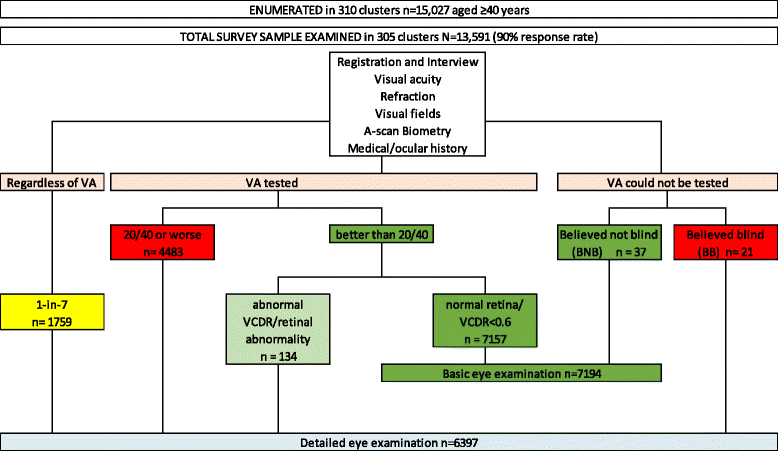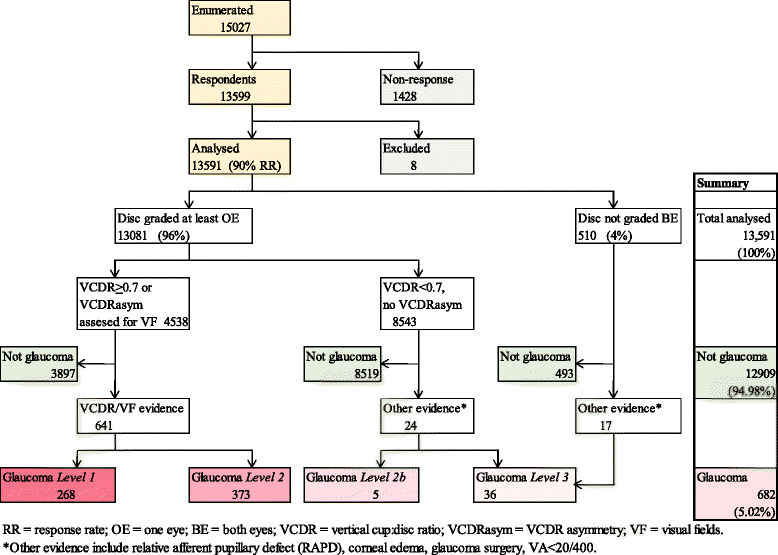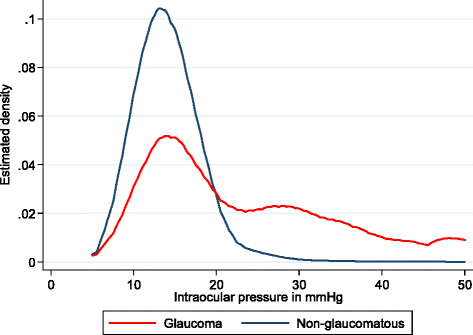A Population-based survey of the prevalence and types of glaucoma in Nigeria: results from the Nigeria National Blindness and Visual Impairment Survey
- PMID: 26653326
- PMCID: PMC4676891
- DOI: 10.1186/s12886-015-0160-6
A Population-based survey of the prevalence and types of glaucoma in Nigeria: results from the Nigeria National Blindness and Visual Impairment Survey
Abstract
Background: Glaucoma is the leading cause of irreversible blindness worldwide. There tends to be a lower reporting of glaucoma in Africa compared to other blinding conditions in global burden data. Research findings of glaucoma in Nigeria will significantly increase our understanding of glaucoma in Nigeria, in people of the West African diaspora and similar population groups. We determined the prevalence and types of glaucoma in Nigeria from the Nigeria National Blindness and Visual Impairment cross-sectional Survey of adults aged ≥40 years.
Methods: Multistage stratified cluster random sampling with probability-proportional-to-size procedures were used to select a nationally representative sample of 15,027 persons aged ≥40 years. Participants had logMAR visual acuity measurement, FDT visual function testing, autorefraction, A-scan biometry and optic disc assessment. Participants with visual acuity of worse than 6/12 or suspicious optic discs had detailed examination including Goldmann applanation tonometry, gonioscopy and fundus photography. Disc images were graded by Moorfields Eye Hospital Reading Centre. Glaucoma was defined using International Society of Geographical and Epidemiological Ophthalmology criteria; and classified into primary open-angle or primary angle-closure or secondary glaucoma. Diagnosis of glaucoma was based on ISGEO classification. The type of glaucoma was determined by gonioscopy.
Results: A total of 13,591 participants in 305 clusters were examined (response rate 90.4 %). Optic disc grading was available for 25,289 (93 %) eyes of 13,081 (96 %) participants. There were 682 participants with glaucoma; a prevalence of 5.02 % (95 % CI 4.60-5.47). Among those with definite primary glaucoma that had gonioscopy (n = 243), open-angle glaucoma was more common (86 %) than angle-closure glaucoma (14 %). 8 % of glaucoma was secondary with the commonest causes being couching (38 %), trauma (21 %) and uveitis (19 %). Only 5.6 % (38/682) of participants with glaucoma knew they had the condition. One in every 5 persons with glaucoma (136;20 %) was blind i.e., visual acuity worse than 3/60.
Conclusion: Nigeria has a high prevalence of glaucoma which is largely open-angle glaucoma. A high proportion of those affected are blind. Secondary glaucoma was mostly as a consequence of procedures for cataract. Public health control strategies and high quality glaucoma care service will be required to reduce morbidity and blindness from glaucoma.
Figures



References
Publication types
MeSH terms
Grants and funding
LinkOut - more resources
Full Text Sources
Other Literature Sources

